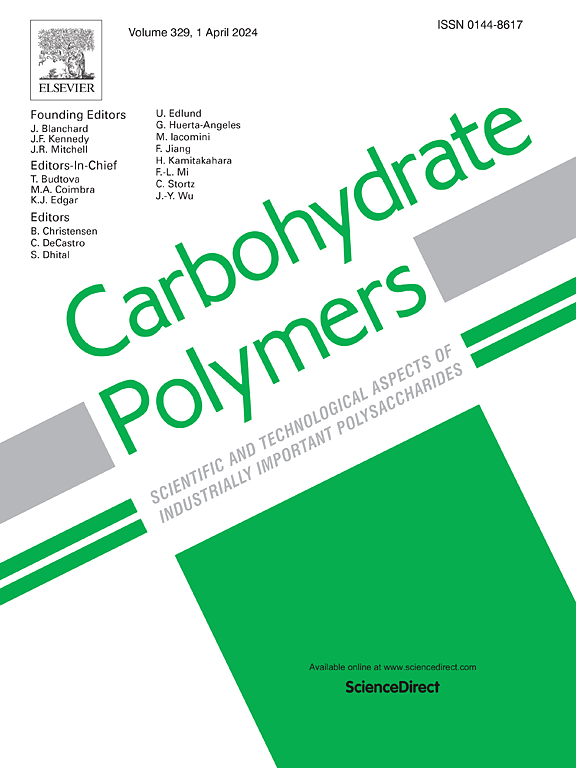pH-responsive starch-based bilayer film functionalized with alliin loaded MIL-101 (Fe) for active food packaging
IF 10.7
1区 化学
Q1 CHEMISTRY, APPLIED
引用次数: 0
Abstract
Food packaging films containing antimicrobial reagents play a crucial role in preventing bacterial-induced fruit decay. This study proposes a bilayer film consisting of an internal amino-modified starch hydrophilic layer and an external amino-modified polyvinyl alcohol/polylactic acid hydrophobic layer, embedding alliin@MIL-101(Fe) as an antibacterial agent, utilizing the pH reduction of fruit decay sites to achieve pH-responsive release, enhancing antibacterial performance. Fourier transform infrared (FTIR) and scanning electron microscopy (SEM) analyses confirm successful crosslinking between amino and aldehyde groups, resulting in the formation of imine bonds and a mesh-like structure conducive to adsorption. Under acidic conditions, the cumulative release rate of alliin reached 74 % within 36 h. Compared to a simple mixture, the tensile strength of the alliin@MIL/NST-NPVA/PLA film reached 34.771 MPa, and transmittance in the wavelength range of 200–370 nm decreased to 0. The scavenging rate of DPPH free radicals in the film can reach 83 %. In addition, the water vapor permeability and oxygen permeability of the film are approximately 7.62 × 10−16 [g/ (m2‧24 h‧0.1 mm)] and 6.83 (m2‧24 h‧0.1 MPa), respectively; moisture content and water solubility decreased to 10.99 % and 20.77 %. This composite film extended the shelf life of strawberries from 2 to 7 days, significantly enhancing freshness.

求助全文
约1分钟内获得全文
求助全文
来源期刊

Carbohydrate Polymers
化学-高分子科学
CiteScore
22.40
自引率
8.00%
发文量
1286
审稿时长
47 days
期刊介绍:
Carbohydrate Polymers stands as a prominent journal in the glycoscience field, dedicated to exploring and harnessing the potential of polysaccharides with applications spanning bioenergy, bioplastics, biomaterials, biorefining, chemistry, drug delivery, food, health, nanotechnology, packaging, paper, pharmaceuticals, medicine, oil recovery, textiles, tissue engineering, wood, and various aspects of glycoscience.
The journal emphasizes the central role of well-characterized carbohydrate polymers, highlighting their significance as the primary focus rather than a peripheral topic. Each paper must prominently feature at least one named carbohydrate polymer, evident in both citation and title, with a commitment to innovative research that advances scientific knowledge.
 求助内容:
求助内容: 应助结果提醒方式:
应助结果提醒方式:


